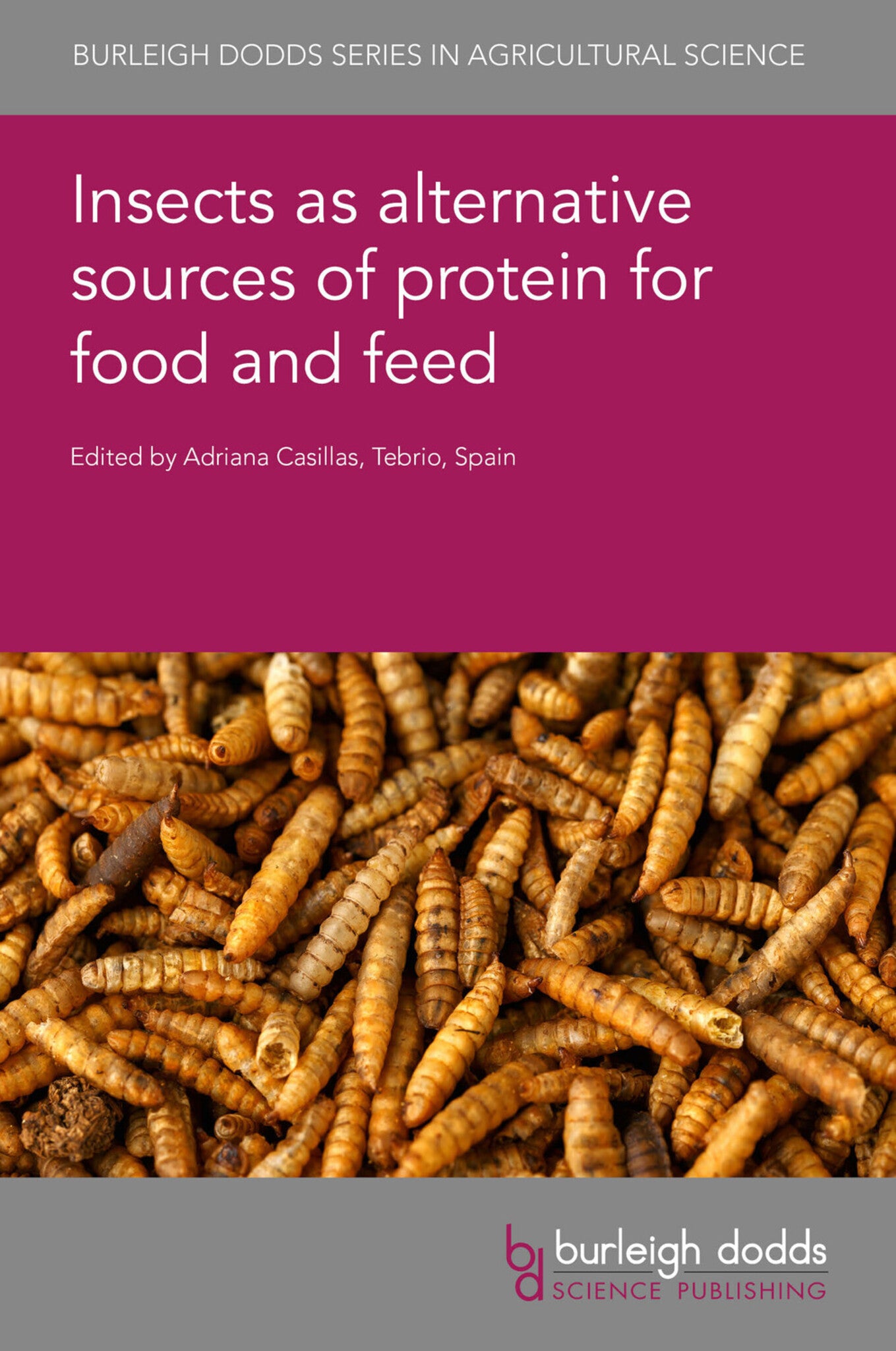We're sorry. An error has occurred
Please cancel or retry.
Insects as alternative sources of protein for food and feed

Some error occured while loading the Quick View. Please close the Quick View and try reloading the page.
Couldn't load pickup availability
- Format:
-
04 February 2025

-
Reviews the nutritional benefits, applications and challenges of using protein from black soldier flies and yellow mealworms in poultry, pig and fish feed
-
Considers recent advances in the development of mass breeding/rearing techniques for the major insect species used as food or feed
-
Explores some of the key issues currently facing the sector, such as the need to ensure product safety, the development of effective extraction techniques and consumer attitudes towards eating protein derived from insects

TECHNOLOGY & ENGINEERING / Food Science / Chemistry & Biotechnology, Food and beverage technology, TECHNOLOGY & ENGINEERING / Food Science / Food Safety & Security, Food security and supply, Food chemistry

Part 1 Production and applications of black soldier flies
- 1.Advances in substrate source composition for rearing black soldier fly larvae as a protein source: Cecilia Lalander and Ivã Guidini Lopes, Swedish University of Agricultural Sciences, Sweden;
- 2.Pathogens and diseases affecting large-scale production of black soldier fly: Roberto M. Pereira, University of Florida, USA;
- 3.Use of protein from black soldier flies in poultry feed: Arya Rezaei Far, Somaya Naser El Deen and Teun Veldkamp, Wageningen University and Research, The Netherlands;
- 4.Black soldier fly meal: an alternative protein source for pigs: S. Struthers, and J. G. M. Houdijk, Scotland’s Rural College (SRUC), UK; and H. N. Hall, Anpario plc, UK;
- 5.Use of protein from black soldier flies in fish feed: Laura Gasco, University of Torino, Italy; Vlastimil Stejskal and Hung Quang Tran, University of South Bohemia in Ceske Budejovice, Czech Republic; Michele Costantini, Michele Zoli and Jacopo Bacenetti, University of Milano, Italy; and Francesco Gai, National Research Council, Italy;
Part 2 Production and application of yellow mealworms and other insects
- 6.Advances in mass breeding/rearing techniques for yellow mealworms as a protein source: David Deruytter, Carl Coudron and Jonas Claeys, Insect Research Centre, Belgium;
- 7.Advances in nutrient/substrate sources/composition for rearing yellow mealworms as a protein source: Riccardo Melis and Roberto Anedda, Porto Conte Ricerche S.r.l., Italy;
- 8.Diseases affecting production of yellow mealworms as a protein source: Antoine Lecocq, University of Copenhagen, Denmark; Helen Hesketh and Pascal Herren, UK Centre for Ecology & Hydrology, UK; and Jozsef Takacs and Annette Bruun Jensen, University of Copenhagen, Denmark;
- 9.Use of protein from yellow mealworms in poultry feed: M. Mabelebele, E. Malematja, S. D. Kolobe, T. G. Manyelo, N. A. Sebola, and F. Manyeula, University of South Africa, South Africa;
- 10.Use of protein from yellow mealworms in fish feed: Enric Gisbert, Aquaculture Program – Institute of Agrifood Research and Technology (IRTA), Spain; and Alberto Ruiz, Aquaculture Program – Institute of Agrifood Research and Technology (IRTA), Spain and Aquaculture and Fisheries Group – Wageningen University and Research, Wageningen, The Netherlands;
- 11.Advances in production of house flies as food and animal feed: key challenges and solutions: Nathaniel A. Sibinga, Katholieke Universiteit (KU) Leuven, Belgium; Eugene Won and Vimal Selvaraj, Cornell University, USA;
- 12.Advances in production of crickets as food and animal feed: Chrysantus M. Tanga, International Centre of Insect Physiology and Ecology (icipe), Kenya; Margaret O. Kababu, International Centre of Insect Physiology and Ecology (icipe) and Jaramogi Oginga Odinga University of Science and Technology (JOOUST), Kenya; and Dennis Beesigamukama, International Centre of Insect Physiology and Ecology (icipe), Kenya;
Part 3 General issues in use of insect protein
- 13.The chemical and microbial safety of insect-based feed and food: Christelle Planche and Erwan Engel, INRAE - UR370 Animal Products Quality Unit, France; and Christina Nielsen-LeRoux, Université Paris-Saclay – INRAE-UMR1319 Micalis-AgroParisTech, France;
- 14.Understanding and changing attitudes towards eating protein derived from insects: Ashkan Pakseresht, Brunel University London, Brunel Business School, UK; and Lynn Frewer, Newcastle University, School of Natural and Environmental Sciences, UK;



